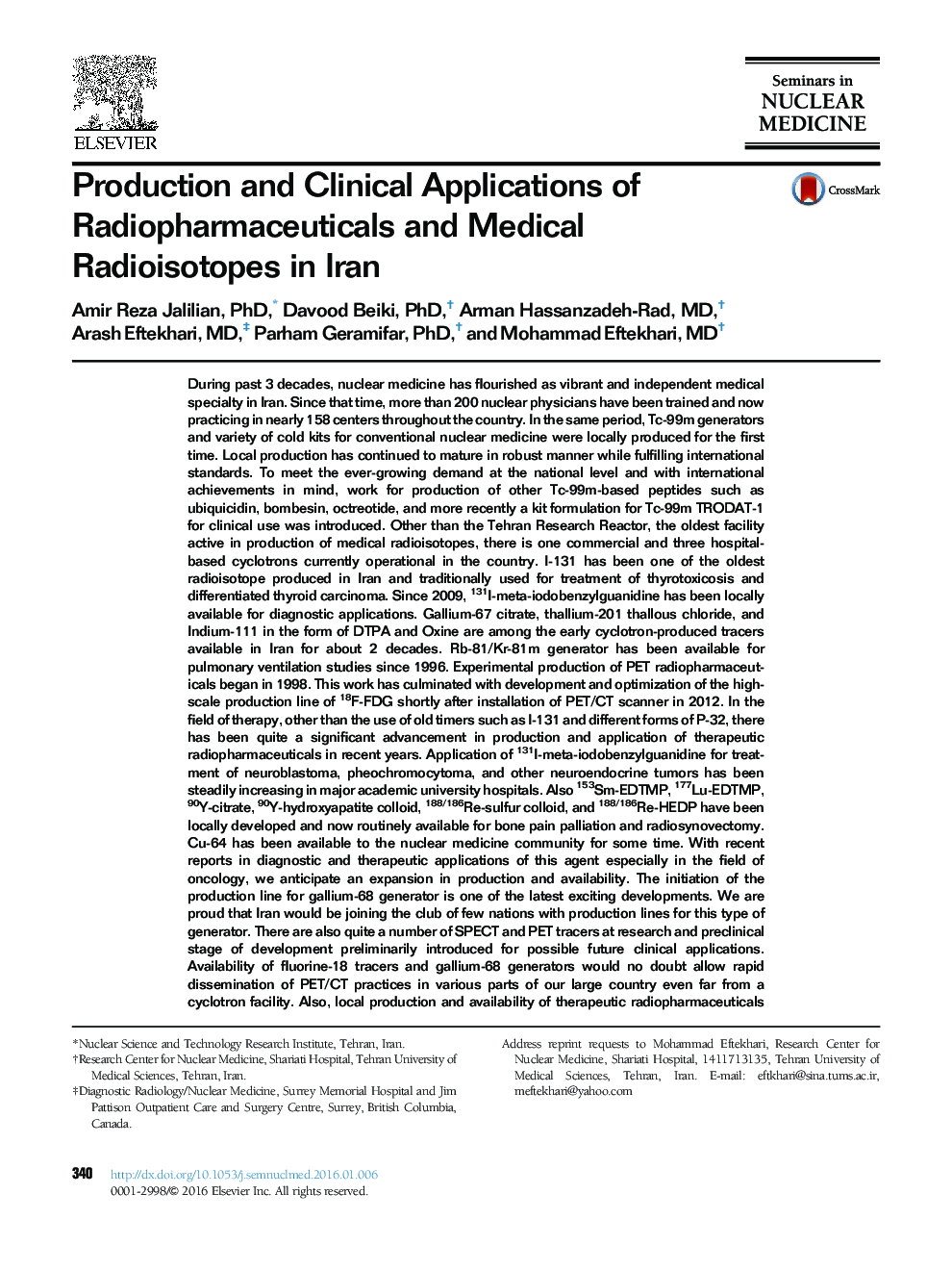| Article ID | Journal | Published Year | Pages | File Type |
|---|---|---|---|---|
| 6246206 | Seminars in Nuclear Medicine | 2016 | 19 Pages |
Abstract
During past 3 decades, nuclear medicine has flourished as vibrant and independent medical specialty in Iran. Since that time, more than 200 nuclear physicians have been trained and now practicing in nearly 158 centers throughout the country. In the same period, Tc-99m generators and variety of cold kits for conventional nuclear medicine were locally produced for the first time. Local production has continued to mature in robust manner while fulfilling international standards. To meet the ever-growing demand at the national level and with international achievements in mind, work for production of other Tc-99m-based peptides such as ubiquicidin, bombesin, octreotide, and more recently a kit formulation for Tc-99m TRODAT-1 for clinical use was introduced. Other than the Tehran Research Reactor, the oldest facility active in production of medical radioisotopes, there is one commercial and three hospital-based cyclotrons currently operational in the country. I-131 has been one of the oldest radioisotope produced in Iran and traditionally used for treatment of thyrotoxicosis and differentiated thyroid carcinoma. Since 2009, 131I-meta-iodobenzylguanidine has been locally available for diagnostic applications. Gallium-67 citrate, thallium-201 thallous chloride, and Indium-111 in the form of DTPA and Oxine are among the early cyclotron-produced tracers available in Iran for about 2 decades. Rb-81/Kr-81m generator has been available for pulmonary ventilation studies since 1996. Experimental production of PET radiopharmaceuticals began in 1998. This work has culminated with development and optimization of the high-scale production line of 18F-FDG shortly after installation of PET/CT scanner in 2012. In the field of therapy, other than the use of old timers such as I-131 and different forms of P-32, there has been quite a significant advancement in production and application of therapeutic radiopharmaceuticals in recent years. Application of 131I-meta-iodobenzylguanidine for treatment of neuroblastoma, pheochromocytoma, and other neuroendocrine tumors has been steadily increasing in major academic university hospitals. Also 153Sm-EDTMP, 177Lu-EDTMP, 90Y-citrate, 90Y-hydroxyapatite colloid, 188/186Re-sulfur colloid, and 188/186Re-HEDP have been locally developed and now routinely available for bone pain palliation and radiosynovectomy. Cu-64 has been available to the nuclear medicine community for some time. With recent reports in diagnostic and therapeutic applications of this agent especially in the field of oncology, we anticipate an expansion in production and availability. The initiation of the production line for gallium-68 generator is one of the latest exciting developments. We are proud that Iran would be joining the club of few nations with production lines for this type of generator. There are also quite a number of SPECT and PET tracers at research and preclinical stage of development preliminarily introduced for possible future clinical applications. Availability of fluorine-18 tracers and gallium-68 generators would no doubt allow rapid dissemination of PET/CT practices in various parts of our large country even far from a cyclotron facility. Also, local production and availability of therapeutic radiopharmaceuticals are going to open exciting horizons in the field of nuclear medicine therapy. Given the available manpower, local infrastructure of SPECT imaging, and rapidly growing population, the production of Tc-99m generators and cold kit would continue to flourish in Iran.
Related Topics
Health Sciences
Medicine and Dentistry
Radiology and Imaging
Authors
Amir Reza PhD, Davood PhD, Arman MD, Arash MD, Parham PhD, Mohammad MD,
